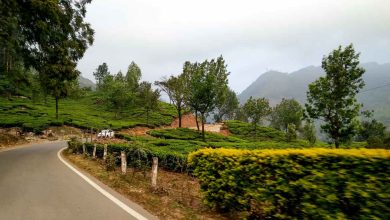India is renowned for its rich array of cultures and traditions, where people warmly embrace each and every festival. Most religious festivals in India have a significant history owing to the rituals involved in them. Onam, an important festival for Hindus, receives immense love and respect from the state of Kerala. Onam or Thiruvonam is a harvest festival along with its mythological connections. While it is celebrated for the first harvest, Onam holds a special significance in the hearts of Keralites.

The 10-day festival witnesses a plethora of religious activities, artistic decorations in the house and folk dance. If you get a chance to step on the streets of Kerala, all you can see is the parade with numerous artists and dancers. Even the people dress in traditional attire for the festival Onam, Thiruvonam. From floral arrangements to worshipping the Lord, let’s discover Onam in the most comprehensive fashion.
[treebo_visual_elements header=”Book Budget Hotels in Kochi” city=”Kochi”]
Date and Timing for Onam 2025
The festival of Onam 2025 begins in late August and culminates on 3rd September, with Thiruvonam marking the most important day. In 2025, it falls on Wednesday, according to the Malayalam calendar (based on Thiruvonam Nakshatram in Chingam).
In most Hindu lunar calendars (especially the Amanta system), a new month begins the day after the new moon (Amavasya). The Purnimanta system (used in some northern states) begins months after the full moon, but the Malayalam calendar is solar-lunar, and Onam is based on the solar month Chingam, not directly lunar.

Chingam is the very first month of the calendar, which follows lunar and solar cycles both. As Chingam marks the beginning of the new year, it generally falls between August and September. Onam receives significant enthusiasm from Keralites in the month of Chingam.
Thiruvonam Nakshatra in 2025 begins at 11:44 PM on September 4 and ends at 11:38 PM on September 5. Therefore, the main day of Onam, Thiruvonam, will be observed on September 5, 2025.
Legend of King Mahabali and Vamana
Festivals in India take you to the ancient times of celestial beings, demons and so much more. It is nearly impossible to celebrate a festival without its deep-rooted history. That’s also why Onam, Thiruvonam, is considered auspicious for the entire state. According to the legend, King Mahabali was a demon king. He was best known for his powerful aura, justice to people and spreading prosperity.

However, his ever-growing power became a cause of concern to gods and goddesses. It was his ego that destroyed Indra (the king of the devas). The devas then developed worry and fear of Mahabali’s egoistic powers. They visited Lord Vishnu to address the matter of concern. That’s when Lord Vishnu restores the power to Indra.

To maintain this balance in exchange of powers, Lord Vishnu incarnated as a dwarf Brahmin named Vamana. It is important to note that King Mahabali rigorously offered his prayers to Lord Vishnu. He also performed various rituals and religious practices to seek the blessings of the Lord. During one of his yagnas (fire rituals), he agreed to grant one wish to a person from the crowd. Vamana happened to attend one of the rituals conducted by King Mahabali.
As Vamana met the king, he requested 3 paces of land (3 steps). The generous king wonders initially; however, he agrees to it. The king then gives Vamana the required land and then he grows bigger in size. The two footsteps of Vamana covered the entire kingdom owned by the king. For the third step, the king offered his head, leading to a sense of devotion. The process led to Mahabali stepping into the netherworld or pataal (hell).

The three worlds of the universe are then restored to Indra. Upon understanding the devotion and love of Mahabali towards Lord Vishnu, he agrees to grant his sole wish. After the asuras (demons) and Mahabali are sent to the netherworld, the king requests for at least one visit to his kingdom every year. Lord Vishnu agrees and that’s why Onam is celebrated as the homecoming of King Mahabali.
Now that you are in Kerala, pamper yourself at ayurvedic retreats amidst the blanket of nature.
Cultural and religious significance of Onam, Thiruvonam
Onam is a significant festival representing the cultural heritage of Kerala. It not only showcases the rich traditions but also maintains the old practices. With important members of the family, the cultural knowledge is passed to generations. Whether it is performing a ritual or witnessing a boat race, everything during Onam, Thiruvonam highlights the beauty of Kerala.
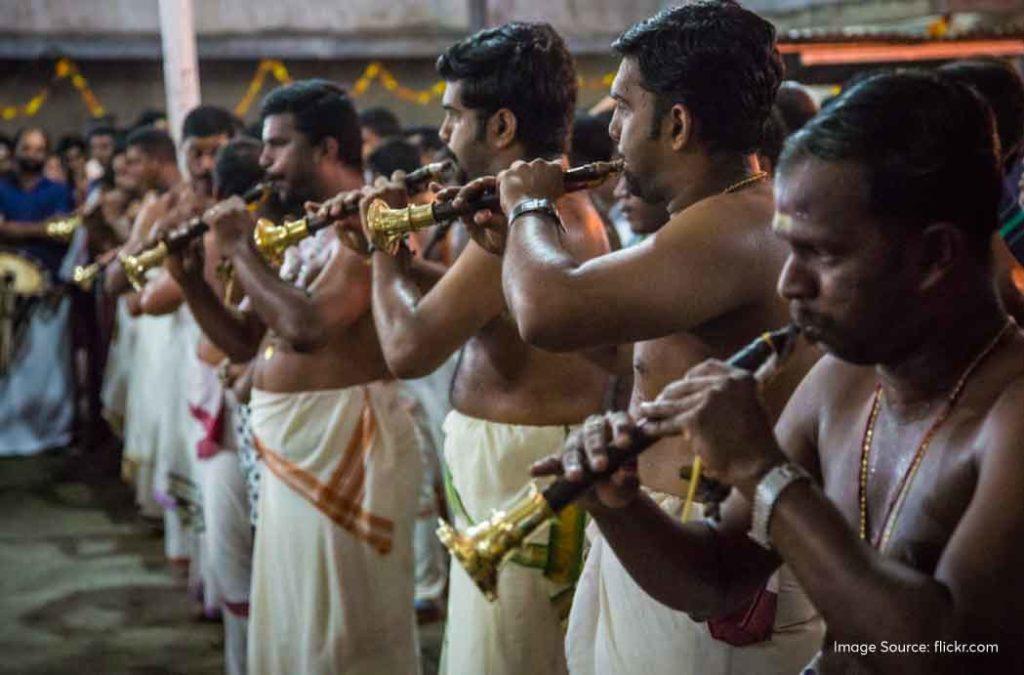
While Onam is celebrated by most families, it stands strong as a central space for communities. Thiruvonam transcends boundaries and invites all loved ones for togetherness. You can be a part of remarkable celebrations on the street, delicious food and public events. From little ones dancing around to elderly members rejoicing with their loved ones, Onam truly stands as a binding agent for Keralites. It unites the people of the state, thereby affirming the values of communal harmony and shared heritage.
As it marks the end of monsoon season, the state unites to joyfully celebrate the first harvest! It is the time when the hard work, dedication and efforts of farmers finally pay off. Moreover, everyone gets to enjoy fresh-grown vegetables and grains during Onam. That’s exactly why Thiruvonam symbolises appreciation and gratitude.
Major rituals, activities and events
1. Athachamayam
Athachamayam is a glorious festival known for its unique celebration. It basically marks the first day of Onam and announces the initiation of rituals. If you wish to witness the glamour of Athachamayam, visit the city of Kochi. It is believed that the king of Kochi won a battle leading to the grand celebration of Athachamayam.
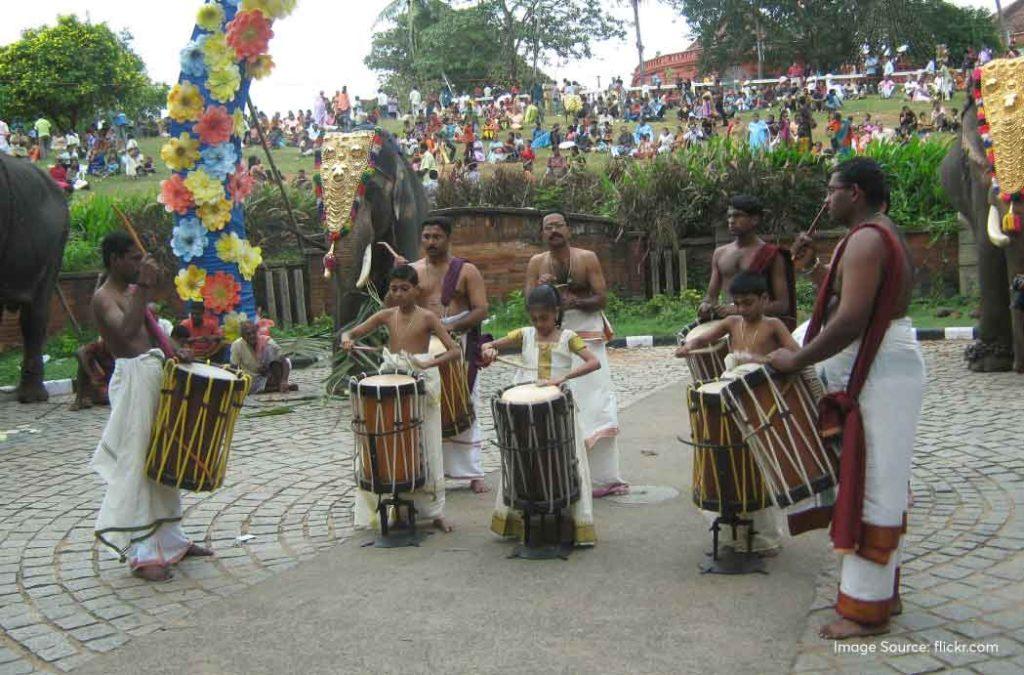
The streets are adorned with decorated elephants with the use of carpets and jewellery. Drums are played on this day to draw the attention of villagers towards the joyful celebration. It is the time when you can literally watch every folk dance of Kerala right on the streets. If you’re planning to visit, you can explore hotels in Kochi for a comfortable stay.
2. Pookkalam
You can easily witness the streets and houses of Kerala adorned with floral rangolis. Pookkalam is an artistic touch in the celebration of Onam. Pook is basically the name of the flower, which is highly available in Kerala. Most residents grow it in their gardens, too. Kalam is a design or pattern, thereby completing the term as a floral pattern.

Creating a pookkalam also revolves around its artistic splendour. The floral arrangement starts by placing a small flower in the centre. The outer circles are then made with different flowers. What’s more? Every layer is added to the pattern every day throughout the 10-day festival. It ensures the floral arrangement remains fresh and bright.

A pookkalam is an easy way to bring families together during Onam. Females of the society or an area gather in numbers to make a massive Pookkalam. Interestingly, multiple places organise a Pookkalam competition to showcase the creativity of Keralites.
3. Traditional Dances: Thiruvathira Kali, Kummattikali, Pulikali, Kathakali and more
Vibrant festivals in Kerala remain incomplete without the inclusion of folk music and dance. What makes the hearts of people joyful is the artistic expression through dance. The streets and small lanes are filled with people performing their favourite steps and folk dances. Thiruvathira Kali is an ancient dance form performed by women. Females dance in a circle by rhythmic clapping to the tunes of music.
You are certain to fall in love with Kummattikali. People are dressed as animals or mythological beings in this form. Special costumes and masks are worn to elevate the energetic atmosphere. Dancers set their rhythm with traditional folk music by syncing steps. It is believed that Kummattikali brings good fortune and luck.
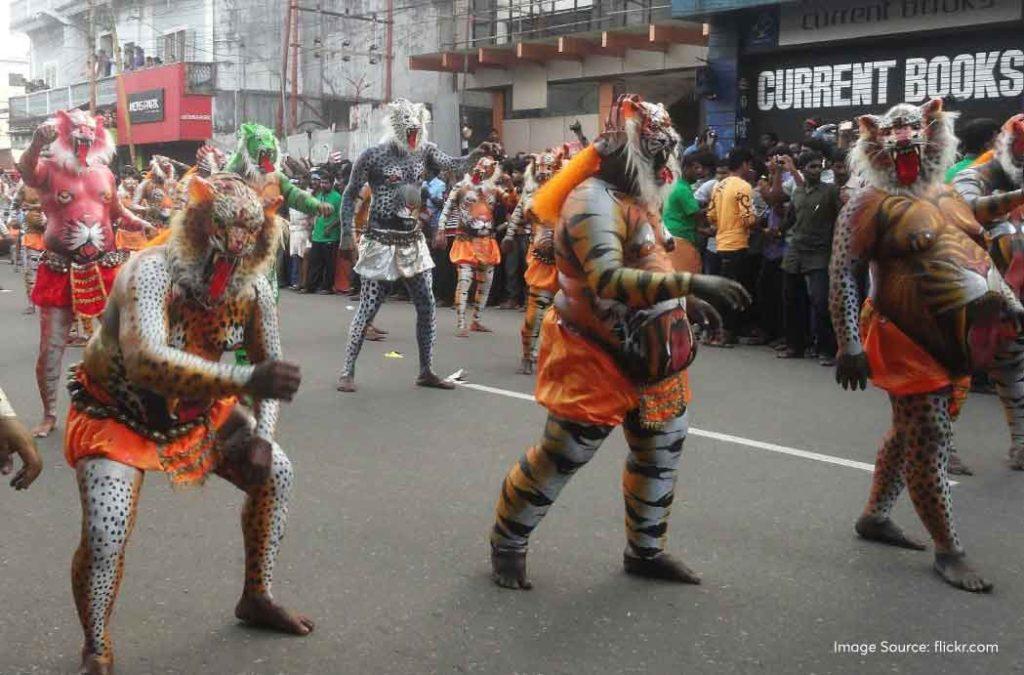
Pulikali is a distinctive dance form that you might not get to see everywhere. It is particularly popular in the Thrissur district of the state. In this dance, people paint their bodies to represent tigers. While some opt for traditional attire, others even carry wooden sticks to showcase the majesty of a tiger. People believe this dance drives away evil and spreads prosperity. It is generally conducted on the 4th day of Onam, Thiruvonam.
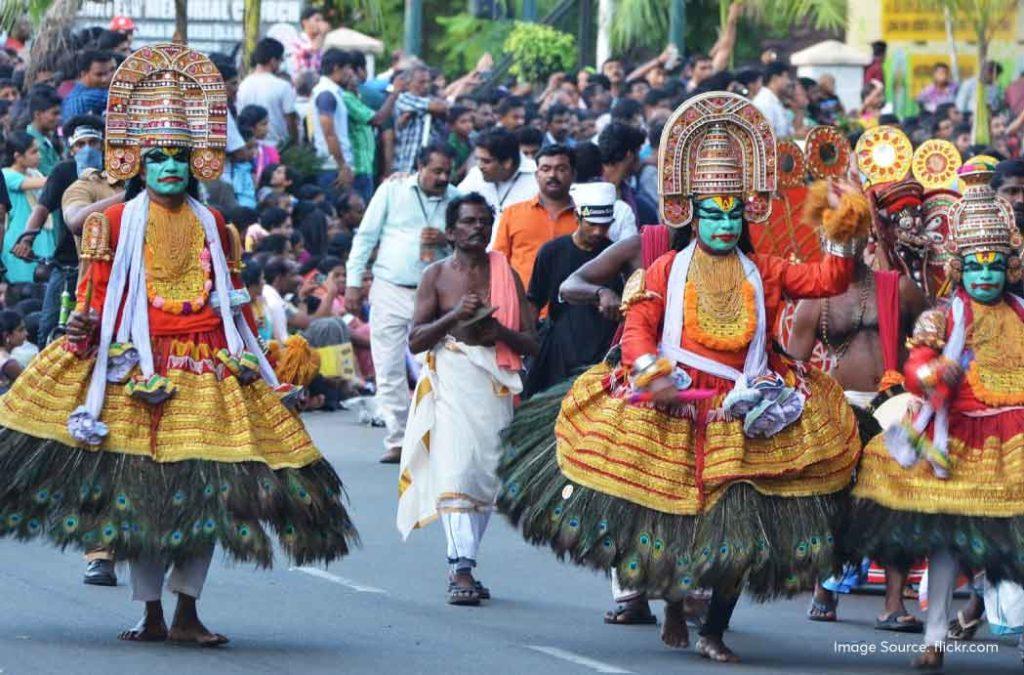
Kathakali is a common yet the most famous dance form of Kerala. You can watch mesmerising dancers showcasing their talents flawlessly. The dance form involves elaborate costumes and makeup. If you watch closely, you can see the scenes of Ramayana and Mahabharata depicted in Kathakali dance. Folk art is itself popular for facial expressions and hand gestures (mudras). It looks clean and smooth; you wouldn’t even imagine the meticulous practice it takes.
4. Vallamkali
A massive celebration without competition does not look very appealing. So, when attending Onam, Thiruvonam, you have to witness the renowned Vallamkali boat race. Popularly known as the snake boat race, Vallamkali is an age-old tradition where boats compete with each other. These are narrow boats constructed in the shape of a snake and locally known as Chundan Vallams.

It takes meticulous planning and craftsmanship to create such gigantic boats for the competition. Interestingly, each boat can accommodate up to 100 rowers. It is typically 136 feet long, thereby showcasing the willingness and excitement of oarsmen to participate in the competition.
The backwaters in Kerala are something that the state is proud of! That’s exactly why boat building and rowing are works of excellence. With such a competition, the state pays tributes to its waterways and inspires young generations to follow the same.

Vallamkali symbolises a deep connection with community spirit. It is simply because the competition is all about coordination, trust and synergy among the rowers. It is not the team that rows fast; it is the team that coordinates better and syncs their moves. As the rowing begins, traditional drums play in the background. The atmosphere of enthusiasm elevates as people dance and sing on the river banks. It sure is a sight of beauty and pride to witness in Kerala!
5. Onasadya
Onasadya is a crucial part of celebrating Onam in Kerala. It is a delectable feast served on the main day of Onam, known as Thiruvonam. Families consider it an important day as it truly reflects the age-old legacy of practices. Depending on families or communities, an Onasadya feast can have up to 20 distinctive food items.

The food items can include but are not limited to Sambar, Rasam, Avial (vegetable curry with coconut and yoghurt), Theeyal (roasted coconut curry), Pachadi (yoghurt-based dish), Kalan (curry), Olan (curry made with pumpkin and coconut milk), Puli Inji (ginger chutney) and Payasam (sweet dish).
Did you know it is not served on normal plates? Yes, an Onasadya feast is traditionally served on a banana leaf. Each food item is served in small quantities to fit on the leaf. The meal is then enjoyed by families, which can be clubbed with dance and music. It is a great way to honour the culinary art and flavours of Kerala with mouth-watering dishes.
Have a few more days in this beautiful state? Visit mesmerising waterfalls in Kerala, redefining the meaning of natural wonders.
Modern-day celebrations
With evolutionary events and advancements, the celebration of festivals has changed too! The modification is empowered by the usage of social media and the influence of Western culture to a certain extent. While Onam, Thiruvonam is about meeting families, an extra tradition of exchanging gifts is also adopted. Families love to celebrate with gifts or the exchange of sweets.
As young generations learn from a plethora of sources, folk dances and music are not limited to the streets. In today’s time, schools and colleges encourage students to be a part of theatre and folk dance. Children now get an opportunity to showcase their traditions on the big stage. Stage plays, film screenings and musical performances are often a part of celebrations in schools and certain communities.

While traditional Pookkalam included floral arrangements in a subtle way, modern-day artistry has transformed. People now include intricate designs and shapes. Even corporate companies and educational institutions organise Pookkalam competitions to honour the culture. Contemporary decorations, fairy lights and lanterns are now a part of the Onam celebration.
The world is coming closer as small and big organisations take efforts to appreciate the age-old celebrations. Social media applications are filled with posts describing the beauty of Onam. Many companies offer special discounts or coupons for the auspicious festival. You can also witness virtual celebrations among families, thereby making it a global event of joy.
Quotes and teachings
“Onam is a festival that brings people together, transcending caste, religion and political differences. It is a celebration of the rich cultural heritage of Kerala and the unity of its people” – K. R. Narayanan
“Onam is not just a festival but a reminder of our cultural roots and the values of togetherness and harmony that we must cherish.” – M. T. Vasudevan Nair

Famous personalities of the country believe Onam to be a festival of joy and glory. As the monsoon ends, greenery is all here to flourish. These quotes stand as an inspiration to learn and pass the knowledge of traditions to generations. All it takes is one step to be an inclusive part of the large community.
Onam celebrations await your presence!
Onam is not only a mere festival of togetherness but a crucial event carrying forward the heritage of Kerala. Onam and Thiruvonam make their way into people’s hearts simply by including the most cultural aspects of the state. Whether it is the dance form, folk music or delicious food, you can see a bit of Kerala everywhere.

Along with the mythological narrations and prominent legends, Onam brings together the joy of storytelling, feasts and artistic expressions. While it honours King Mahabali, it also creates a sense of belonging among community members at large. The festival reinforces values of cultural pride and preserves legendary practices. So, get ready to reflect on the stories of the past only to celebrate an enriching festival in the present!



